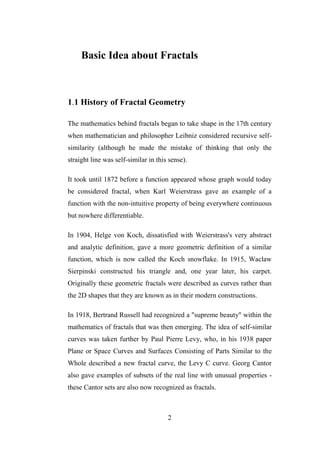This document provides an overview of fractal geometry. It begins with a preface stating that the book aims to provide background on basic fractal geometry topics, assuming some prior geometry knowledge. It notes that fractals fascinatingly mix art and mathematics by demonstrating equations are more than numbers. The document then outlines the book's contents over four chapters: history of fractal geometry, calculating fractal dimension, specific famous fractals, and applications of fractals. The first chapter discusses the history from early contributors in the 17th-19th centuries to Mandelbrot coining the term "fractal" in 1975 to describe self-similar geometric shapes with non-integer dimensions.













































